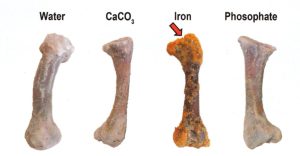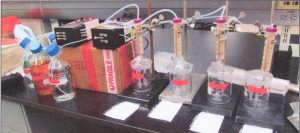Previously I have written two website articles about soft tissue in dinosaur bones. The first was named “Soft Tissue in Dinosaur Bones,” and the second was named “What is DSTRI?” The salient point of any discussion about soft tissue in dinosaur (and other ancient life form) bones in the rock record is that this soft tissue cannot possibly last millions of years according to any known science. It certainly can be scientifically understood to have lasted thousands of years, say the 4,500 years since the Genesis Flood.
Nevertheless, the deep-time paradigm of secular scientists includes a commitment (on faith) to the extinction of dinosaurs 65 million years ago. That commitment results in an ongoing search for the imagined magic material or process that would preserve dinosaur soft tissue for the required millions of years. We must keep in mind that for secular science there can be no serious consideration of the biblical timeline or the fact of a global Flood on earth.
Over the past thirty years many discoveries of dinosaur bone soft tissue (e.g. blood cells, osteocytes, collagen, nerve cells, and proteins) have only intensified the search for the answer to why and how these things exist today. Creationist microbiologist (the late) Kevin Anderson published the book Echoes of the Jurassic: Discoveries of Dinosaur Soft Tissue in 2017 that debunked the idea that the soft tissue in bones can be preserved for millions of years. He included an evaluation of the iron hypothesis proposed by Dr. Mary Schweitzer as a possible mechanism in this book as well and found it to be severely lacking.
The latest attempt that I am aware of to make iron out to be the savior for the problem of soft tissue in dinosaur bones was published April 25, 2023, in Minerals 13(5) 1596-620 by Ullman et al. This was an experiment that was a direct test of the idea that iron could be a good preserver of fresh bone in sand as it was percolated with groundwater solutions.
Chicken Femur Bone Experiment
So, in this experiment raw chicken femurs were placed in sand in separate vessels. Each of the bones in the sand was inundated with different solutions as seen in the figure above. One was percolated with just pure water, one with calcium carbonate solution, one with iron solution, and one with phosphate solution. After 90 days the experimenters measured the amount of collagen remaining with three different techniques.
Chicken Bone Preservation Experiment Basic Setup
The detailed results of the experiment can be found in the paper published by the scientists. In summary, the water allowed 20% of the collagen to decay, the calcium carbonate solution allowed 10% of the collagen to decay, the iron solution allowed 65% of the collagen to decay, and the phosphate solution allowed 40% of the collagen to decay. This was after 90 days, so if we allow for an extrapolation of the experiment out to 65 million years, it is an extrapolation of 260,000,000 times. It seems safe to say that none of these solutions are preservatives that could be projected so far that collagen in bones could last for millions of years.
And notice that of the four solutions iron was the worst preservative! This experiment does nothing for the secular idea that iron can cause soft tissue to last for millions of years. On the other hand, it does not harm the concept that dinosaur soft tissue in fossil bones is the result of Noah’s Flood some 4,500 years ago.
No, iron still is not the answer the secularists are looking for to explain the preservation of soft tissue in dinosaur bones! Millions of years remain simply figments of the imaginations of evolutionists.
J.D. Mitchell




